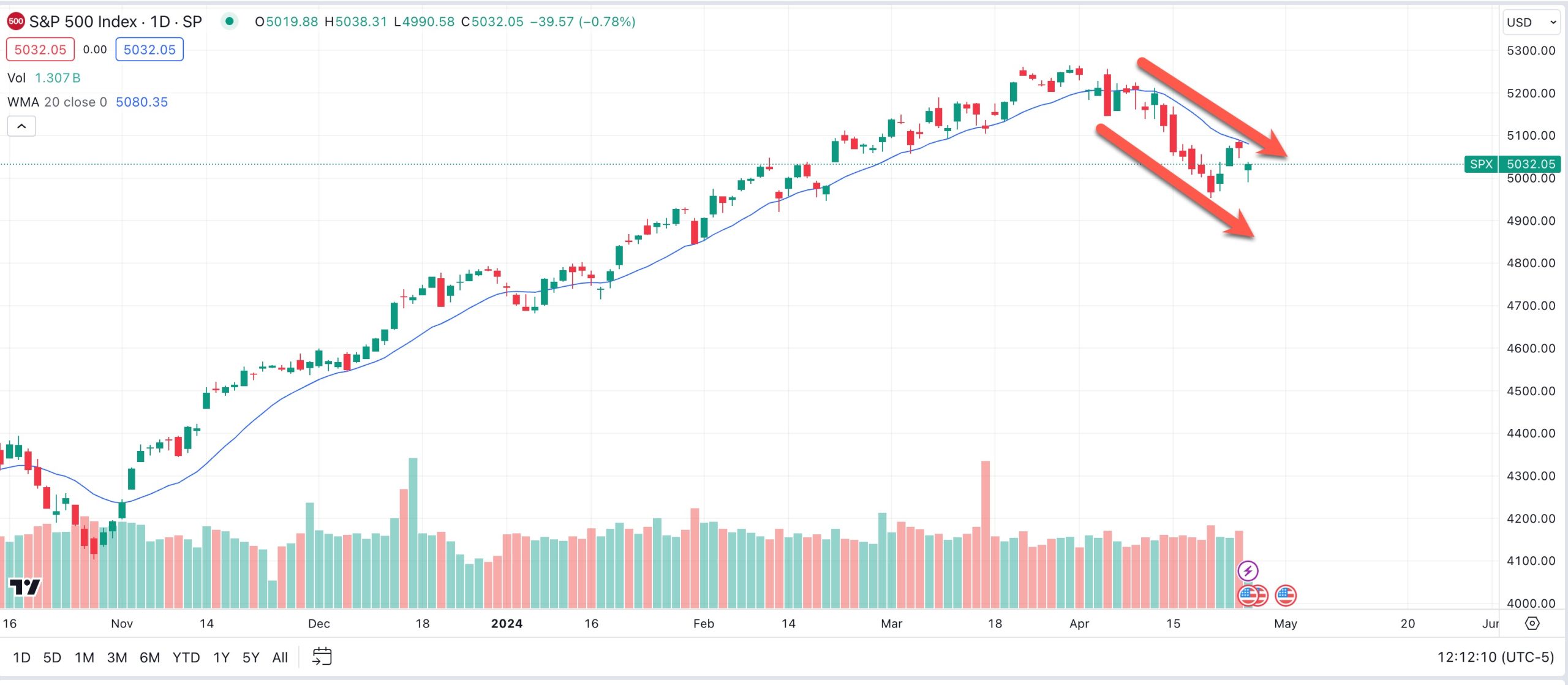Down We Go?
Yesterday, we discussed how the market had shown relative strength recently and asked the question whether the bullish sentiment would last. While it’s hard to know precisely when a bottom will take place, we highlighted the danger of trying to pick the low point because inevitably at some stage betting on the bottom will lead to a losing trade where lower lows follow.
We also emphasized that the approach successful traders take is to adhere to technical trends, which is definitively down. Look no further than the chart below to see the trend.
The action in the market on Thursday signaled that the recent upbeat move in the market was likely nothing more than a bullish bounce from oversold conditions but the broader trend remains bearish.
So what’s the best way to play the market now?
Key Points
- Inverse ETFs increase in value when the market declines, offering a simple alternative to direct short selling.
- Put options allow investors to sell a stock at a predetermined price, useful for betting against a stock or protecting existing investments.
- VIX options trade based on market volatility rather than stock price directions and are valuable during turbulent markets.
How To Invest If Prices Go Lower?
Inverse ETFs are designed to perform inversely to the index or benchmark they track so if the index goes down, the value of the inverse ETF goes up. If a market decline is on the horizon but you don’t want to take the risk of short-selling an inverse ETF is right up your alley.
They have the benefit of being diversified because they cover broad indices such as the S&P 500 and offer a way to hedge against market-wide downturns. And it’s also possible to invest in leveraged inverse ETFs that provide returns that are multiple times the inverse of the underlying index’s performance, amplifying both potential gains and risks.
For those who want to venture into the world of derivatives, put options are another way to play the market. They grant the holder the right, but not the obligation, to sell a stock at a predetermined price before the option expires. This strategy can be used to speculate on the decline of a stock’s price or to hedge against a downturn in a stock that an investor already owns.
They also offer good leverage so a relatively small investment in put options can control a significant amount of stock, potentially leading to high returns if the market moves in the anticipated direction. For those holding stocks, buying puts can act as insurance, limiting potential losses without requiring the sale of the stock itself.
How To Bet On Volatility
Another approach to betting on downturns is simply to bet on volatility, which usually spikes during selloffs. The VIX, often called the “fear gauge,” measures the stock market’s expectation of volatility based on S&P 500 index options.
When markets become volatile, especially during downturns, the VIX tends to rise. Trading VIX options or VIX-related ETFs can be a strategic move during market turmoil.
The bottom line is VIX options offer a straightforward method to trade based on market volatility, providing a hedge for volatile portfolios and rising in value as other investments falter. Plus, they deliver insights into market sentiment and potential shifts, aiding in strategic investment decisions.




